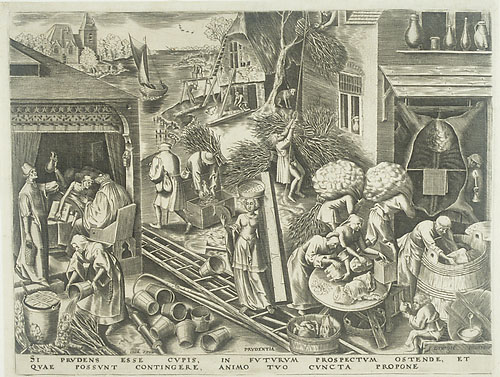| ||
|
Hieronymous Cock Flemish, ca. 1510-1570 after Pieter Bruegel the Elder (Flemish, ca. 1521-1569) Prudentia (from The Seven Virtues),
Museum Purchase A rather dry reflection of the lustier tone of Bruegel's drawing upon which it is based, this print at least shows the vital earthly bustle inspired by the virtue of Prudence, which is chief among the Seven Cardinal Virtues. Her sieve distinguishes good from evil and she carries a coffin as memento mori. The activity around her is directed at achieving earthly well-being through foresight, which may indicate that the print is an ironic commentary on the misuse of a Cardinal Virtue, which ought to be directed toward achieving Heaven. The inscription counsels us to think always of the future and weigh all possible contingencies. But is this future in Heaven or on Earth? Both the Virtues and the Vices which are in mortal combat with each other are traditionally seen as female. Is our psyche a battleground of conflicting female powers? Or is this mere male myth? Christine de Pizan extols the female virtue of Prudence, upon which both civilization and the soul are founded. For this kind of Prudence governs households justly and thus permits the endless generosity, bounty, and liberality of women. A prudent generosity saves both our body and our soul. |
